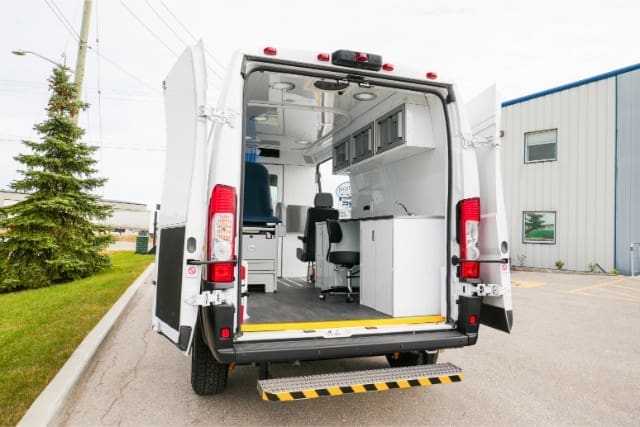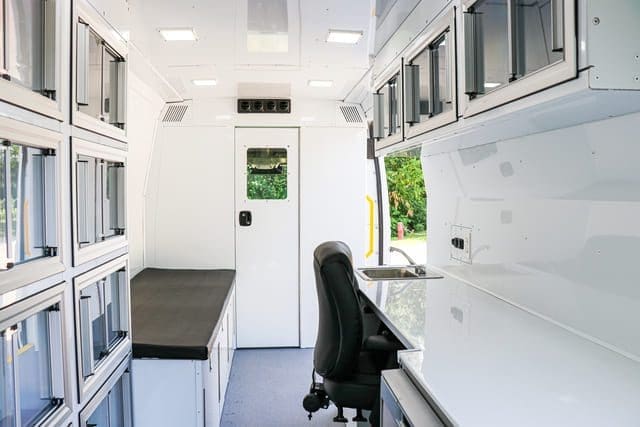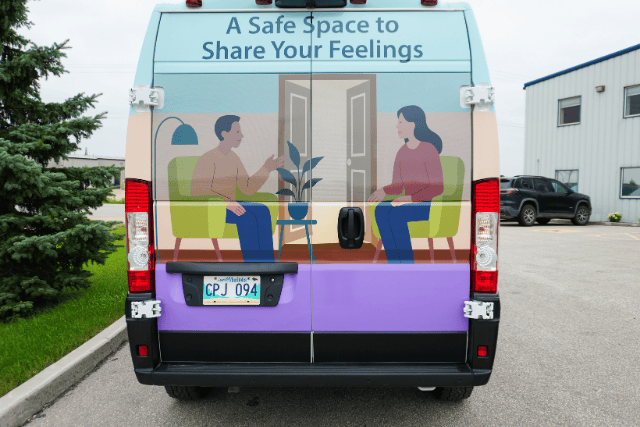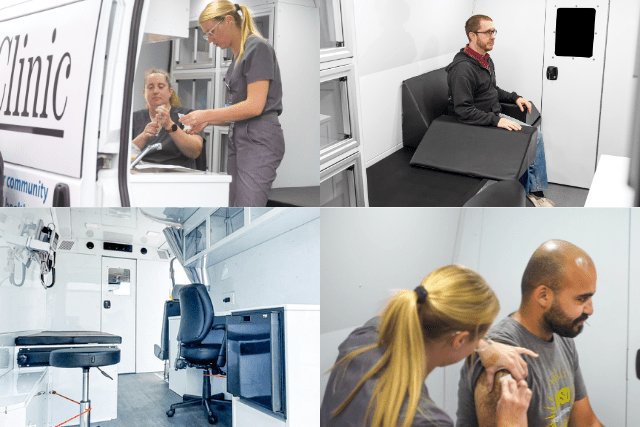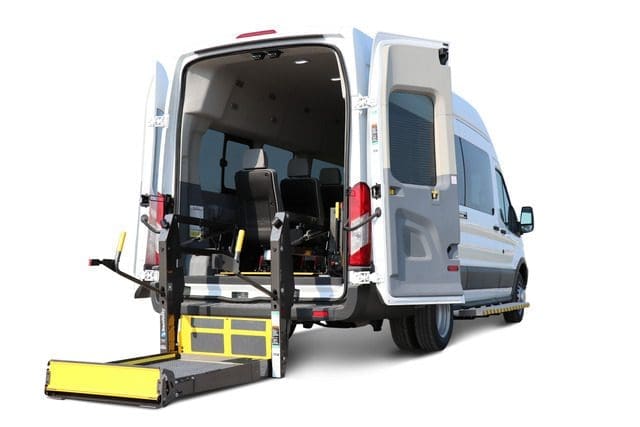Did you know that almost half of Canadian adults live with a chronic disease like diabetes, heart disease, or COPD? That means millions of people need regular healthcare to stay healthy. But here’s the problem—many of them face barriers to accessing it.
If you work in healthcare, you’ve seen it happen. People miss appointments because they can’t travel. ERs get packed with patients who could have been treated sooner. Healthcare teams get overwhelmed just trying to keep up.
The gap is clear: Too many people aren’t getting the care they need when they need it.
And what happens when this problem isn’t solved?
- Health gets worse: Chronic conditions lead to serious problems when left untreated.
- Costs go up: Treating a crisis in a hospital costs way more than managing it early.
- Healthcare teams feel the strain: More patients rely on emergency care, stretching resources thin.
Now, imagine a better way. What if healthcare could reach people instead of them struggling to get to a clinic? Community paramedicine brings care to where people are, helping them manage their health before things get worse. That’s where mobile medical units come in—they close the gap by making care more accessible.
Our team at MoveMobility has spent the better part of the last two decades manufacturing mobile medical vehicles for organizations like yours and Quest Community Health Centre. We know you have many organizations you can work with. The goal of this article is to provide you with some more insight into how you can use community paramedicine to improve chronic disease management all over Canada.
After you’re done reading, you’ll have a clearer understanding of how mobile healthcare can fill in the gaps in chronic diseases management.
What is chronic disease management?
Chronic diseases are long-term health conditions that require ongoing care. These include arthritis, asthma, high blood pressure, and kidney disease—conditions that don’t go away and can get worse without proper management.
This kind of care is called chronic disease management or preventive healthcare.
The goal is simple: help people stay healthier for longer and prevent small health issues from turning into serious complications.
Here’s what chronic disease management typically includes:
Regular check-ups: Tracking symptoms and adjusting treatments before problems escalate
Medications: Keeping conditions stable with the right prescriptions
Education and support: Helping patients understand their condition and make informed health choices
Lifestyle changes: Encouraging habits like better nutrition, physical activity, and stress management
Screenings and monitoring: Testing for risk factors before they turn into bigger issues
How big is this issue in Canada?
- 1 in 2 adults has at least one chronic condition.
- Chronic diseases are responsible for 7 in 10 deaths nationwide.
- Cancer, stroke, and chronic kidney disease are on the rise, increasing demand for long-term healthcare.
But managing these conditions isn’t easy for everyone. Many people struggle to get the care they need, and that’s where the real problems start.
What barriers do Canadians face in managing chronic diseases?
Even when Canadians want to stay on top of their health, many face major roadblocks.
Here’s what’s standing in the way:
1. Distance and lack of transportation
- Rural and remote communities: Canadians living in rural areas often have to travel long distances to access healthcare services. This can lead to delays in seeking care and managing chronic conditions effectively.
2. Overloaded healthcare system
- Long wait times: In 2011/12, 12.9% of Canadian adults aged 20 years and over reported having two or more chronic diseases.
3. Financial challenges
- High costs of medications: Prescription medications have been consistently expensive in Canada, which has the third-highest drug costs of any OECD nation. In 2021, over one in five (21%) adults in Canada reported not having any prescription insurance to cover medication costs.
4. Mobility and disability barriers
- Accessibility issues: Approximately 8 million individuals aged 15 and older have one or more disabilities in Canada. These individuals often face challenges accessing healthcare facilities that are not fully equipped to accommodate their needs.
5. Mistrust or lack of awareness
- Indigenous communities: Indigenous populations in Canada often experience health disparities and may have mistrust towards the healthcare system due to historical and ongoing inequities.
When healthcare is hard to reach, chronic diseases go unmanaged. This leads to more ER visits, more hospital stays, and more serious health complications.
That’s why community paramedicine is stepping in to bridge the gap—by bringing care directly to the people who need it most.
How can community paramedicine help manage chronic disease across Canada?
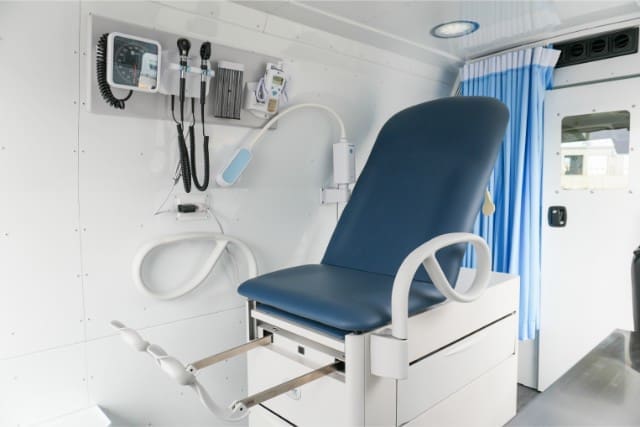
You’re probably more than aware that getting medical care isn’t easy for everyone. If patients live far from a doctor, have trouble moving around, or can’t even afford the travel costs, keeping up with chronic disease management can feel impossible. That’s where community paramedicine comes in. Instead of people struggling to reach healthcare, healthcare comes to them—right to the communities they live.
This approach is making a huge difference across Canada, helping people with chronic conditions get the care they need without long waits, expensive trips, or unnecessary ER visits.
Here’s how.
Healthcare comes to rural and remote communities
For many Canadians, especially those in small towns, Indigenous reserves, and Northern communities, the nearest doctor is hours away. That means a simple check-up can turn into an expensive, all-day trip—or worse, not happen at all.
About 18% of Canadians live in rural or remote areas with limited healthcare.
How community paramedicine with mobile clinics helps:
- Trained paramedics come to the patient, so they don’t have to travel.
- Mobile clinics have medical equipment, testing tools, and telehealth connections for real, hands-on care.
- People get regular check-ups, screenings, and treatments where they live—before problems get worse.
Fewer emergency room visits
Emergency rooms in Canada are packed, with wait times stretching hours or even days. Many of these visits happen because people can’t get routine care, so their conditions get worse.
About 30% of ER visits in Canada could be handled outside of a hospital.
How can community paramedicine help with this?
- Trained community paramedics check on patients at home so they don’t need to rush to the ER.
- Chronic disease management happens early, keeping small problems from becoming emergencies.
- Patients get ongoing care so conditions like asthma, high blood pressure, or kidney disease stay under control.
More affordable healthcare
Canada’s healthcare system covers doctor visits, but chronic disease management still costs money. Medications, home monitoring, and frequent clinic trips add up fast. In fact, 1 in 5 Canadians don’t have prescription insurance, making it hard to afford treatment.
How community paramedicine can help:
- No travel costs—healthcare comes to patients, so they don’t have to pay for transportation.
- Community paramedics help manage medications and treatments, preventing costly hospital stays.
- Some mobile clinics offer free or lower-cost medical services through local programs.
Easier care for people with mobility challenges
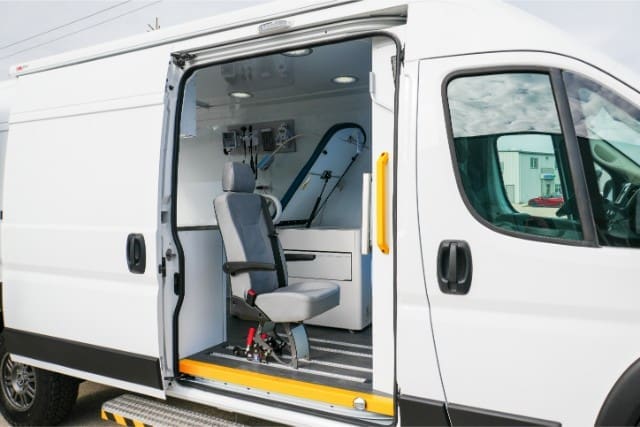
For seniors and people with disabilities, getting to a clinic isn’t just difficult—it can be impossible. Many healthcare buildings aren’t fully accessible, and even when they are, the physical effort of getting there can be overwhelming.
Millions of Canadians live with a disability that affects their daily life.
How community paramedicine can help:
- Fully accessible vehicles with ramps and lifts make getting care easier.
- Community paramedics can offer in-home visits for people who can’t travel.
- Patients get the care they need without stress or struggle.
Building trust in Indigenous and underserved communities
Not everyone feels comfortable seeking medical care. Some Indigenous and underserved communities have had bad healthcare experiences in the past, leading to mistrust and delayed care.
Many Indigenous communities also lack local healthcare services, forcing people to travel long distances for routine check-ups.
How community paramedicine can help:
- Community paramedics work within communities, building trust and lasting relationships.
- Patients see the same healthcare workers regularly, making them more likely to get help before their condition gets worse.
- Care is provided in a way that respects cultural needs and language preferences.
Why community paramedicine is making a difference
As you can see, community paramedicine removes many barriers to healthcare. Instead of waiting for patients to come to a doctor, it brings healthcare to them. This means:
- More people in rural areas get treated sooner
- Fewer preventable ER visits
- Lower costs for patients and the healthcare system
- Better health for people living with chronic disease
For Canadians struggling with chronic disease management, mobile healthcare is changing lives. Instead of being left behind, they get the care they need—when and where they need it.
Learn more about community paramedicine
You came to this article because your organization is tired of seeing chronic diseases go unmanaged across the country. Too many people struggle to get regular care, emergency rooms are packed, and people in rural areas often get left behind. The reality is, when healthcare is hard to reach, chronic conditions get worse.
After reading this, you’ve learned:
- Why chronic disease management matters and the barriers many Canadians face
- How community paramedicine is closing the gap by bringing healthcare to patients
- How mobile medical units provide real solutions for rural, low-income, and underserved communities
At MoveMobility, we’ve seen firsthand how mobile medical units empower healthcare organizations like yours to provide healthcare where it’s needed. Hospital strain is reduced, patient health improves, and more lives are saved. The vehicles we manufacture create real change in communities.
If you’re looking for a better way to manage chronic disease in the communities you serve, we’re here to help. Click the button below to talk to a mobility expert.
If you’re not ready yet, we have a few other resources you should check out to learn more.
Start by checking out the video below on the Mobile Clinic Van. This will give you a better idea of some of its features so you can determine if it’s a good fit for providing community paramedicine.
After that, check out the article on how to start a mobile clinic in 10 steps. This will steer you in the right direction in obtaining one for your community paramedicine program.


